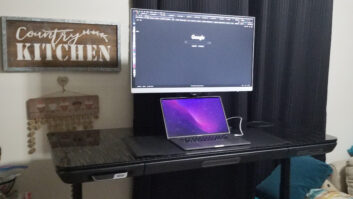Stephen Baker is The NPD Group’s Vice President, Industry Analysis
Microsoft released the consumer version of Office 2010 to retail a few weeks ago, and according to NPD’s Weekly Tracking Service the results are mixed.
Units and dollars are down from Office 2007’s initial two weeks of sales but are in line, and in fact slightly ahead of, sales trends of Office 2007 so far this year. This fact highlights the challenges for Microsoft going forward for Office. A strong product launched into a saturated market faces considerable headwinds. Even so, sales of Office 2010 in general have to be characterized as a bit disappointing during the first two weeks.
Microsoft has a very different battle to fight in this release than in either the Office 2003 or 2007 version. Microsoft was very successful with sales of those products and its successful program to eliminate the “free” versions of Office floating around consumers’ homes and replace those with legitimate, upgradeable products that produced incremental revenue for Microsoft. Lifetime sales for Office 2007 at retail exceeded $1.5 billion for the 3.5 years it was on the shelf. A sales level that equated to approximately 10 million new copies of Office into the market in addition to the sales of PCs with Office pre-installed and the existing versions. Office 2007 was a radical new design that certainly helped deliver a lot of curious buyers and it was launched nearly parallel with Vista, adding a good deal of promotional activity in the software aisle, both of which likely helped drive initial sales of Office 2007. This time Office was launched during a seasonally slow period for PC purchases which have, over time, proven to be a have a strong impact on Office sales. The combination of these factors, plus the increasingly saturated installed base likely explains most of the initial weakness in sales of Office 2010.
With the release of 2010 Microsoft has to confront the success of its retail strategy head-on. Selling such a heavily used product into a base that has already been upgrading at a very high rate is an enormous challenge. While Office 2010 has many compelling new features, it is always an uphill battle to sell a high installed base product based on new features alone. Microsoft has been much quieter about selling Office 2010, choosing to release the boxed version at standard everyday pricing with a traditional mix of retail circular and end cap advertising, but without a lot of hoopla and fanfare (although some of this is likely to come during the upcoming back-to-school season). The key card product, designed to facilitate upgrading for PC buyers, has gotten off to a solid start accounting for about one-third of the unit volume. This is important because we do believe that the success of 2007 and 2003 at retail will make it very difficult for the boxed version of 2010 to generate much incremental retail sales volume above the trend line of the past 18 months or so.
However, the one strong opportunity for Microsoft and its retail partners is to add installations onto PCs where once the productivity software choice was Works or nothing. Last summer’s Next Class PCs from Best Buy that came with Office pre-installed were a first for retail and were very successful. The key card program can, as more PCs are shipped with the code enabling key card upgrades, potentially add some incremental revenue opportunities to the retailers that were not available to them previously.
Finally, a word needs to be said about the potential impact of free productivity products on the sales of Office 2010 to consumers. While products like Google Docs are certainly playing a part in the overall productivity software ecosystem, it is a virtual certainty that the slower than expected initial sales of Office 2010 have nothing to do with free alternatives, be they Google Docs or Office 2010’s own online version. These products have little awareness among the mainstream consumer who is the retail boxed version’s primary customer. Over time it is certainly likely that we will see some slowdown in retail sales as consumers alter their productivity software habits, but that time is not now. Mainstream consumers have not embraced the concept of the cloud, nor are they likely in the short to mid-term, making most of the questions around free software moot. The real short-term question is how Microsoft is able to match promotional fervor, pricing, and sales to the long-term opportunity to sell incremental versions of Office into a saturated consumer marketplace.
To read more from Stephen Baker and other NPD analysts please visit The NPD Group Blog.













